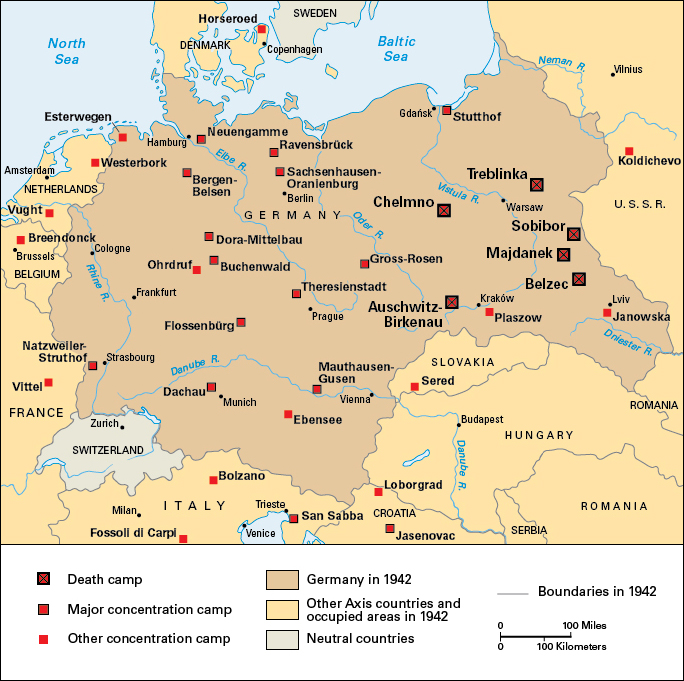Sobibór, << SOH bee bawr, >> was a death camp that Nazi Germany set up in Poland during World War II (1939-1945). The killing center stood at the edge of the town of Sobibór, near Lublin in eastern Poland. Sobibór was one of several camps involved in Aktion Reinhard (Operation Reinhard), a Nazi plan to kill the roughly 2 million Jews living in German-occupied territory in what had been central Poland. German Schutzstaffel (SS) troops and police managed the Reinhard death camps. The SS was a special Nazi military group. Many of the camp guards were from Ukraine.

The Sobibór camp was built along a railway line in a rugged, remote region. A ring of trees and branches woven into a barbed-wire fence helped hide the camp from the outside. Sobibór began to operate as a death camp in May 1942. Prisoners entered the camp in railcars. They were unloaded, separated by sex, and forced to surrender their possessions. A few people, including some with special skills or trades, were used for forced labor. The others were stripped, the women had their hair cut off, and all were led into gas chambers. The Nazis piped deadly carbon monoxide gas into the chambers, killing the people inside. The bodies were then removed and placed in mass graves. Beginning in the autumn of 1942, many of these bodies were exhumed (dug up) and burned. A machine ground their bones to powder.
Sobibór’s victims were mostly Polish Jews. Jews from other nations, including Austria, Czechoslovakia, Germany, and the Netherlands also were killed at the camp. A number of Poles, Soviet prisoners of war, and Roma (sometimes called Gypsies) died there as well. In total, the Nazis murdered around 200,000 people at Sobibór.
In October 1943, several hundred Sobibór prisoners revolted. They killed several SS troops and broke through the fences. About 300 prisoners reached the surrounding forest. Many were killed during the escape attempt or in the following days. Only about 50 of them survived the war. Following the revolt, the Nazis killed the camp’s remaining prisoners. They also killed thousands of prisoners in nearby camps.
To erase evidence of the death camp, the Nazis destroyed the gas chambers and planted crops and trees over the camp. Investigators later reconstructed the history of Sobibór from documents, accounts of survivors, and the postwar trials of camp officials. Today, a chapel, memorial, and museum stand on the camp’s former grounds.
See also Concentration camp ; Holocaust ; Nazism ; Schutzstaffel (SS) .
